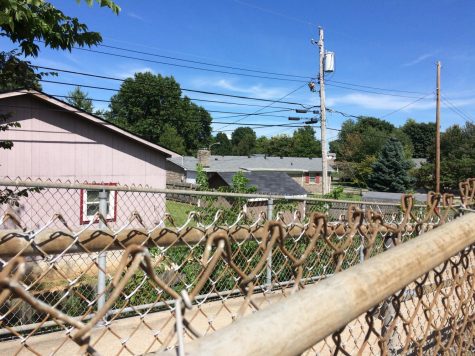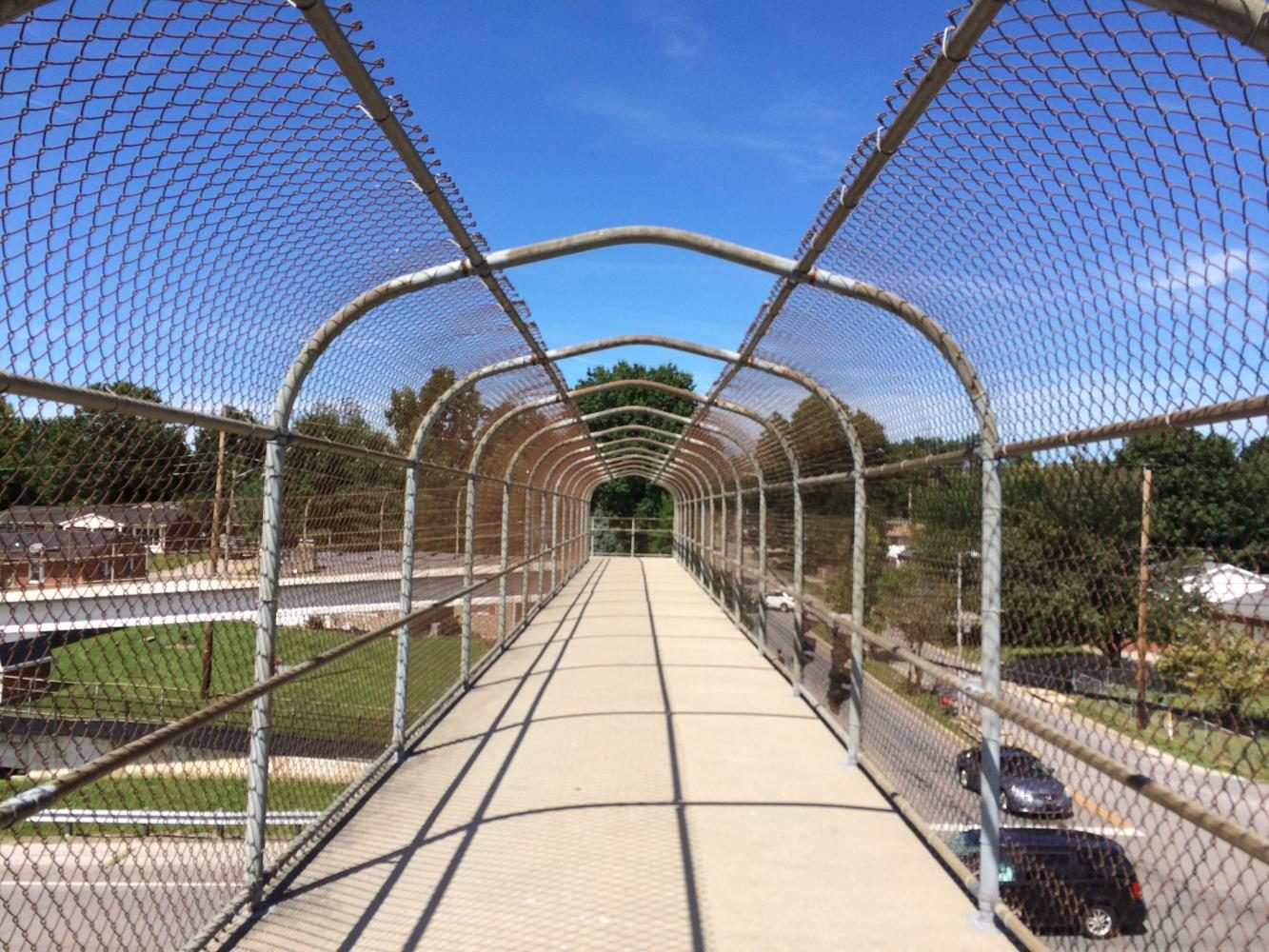The Suburban Illusion
Why urban sprawl has a negative impact on the western world.
May 4, 2017
The suburban world started as a utopian design. Headed by overzealous urban planners convinced that strenuous zoning laws were the future, and forged by massive innovations in transportation, a thriving American infrastructure led to a new sort of habitat- one that would come to be the new frontier for aging veterans returning from war. It didn’t take long for the new neighborhoods to boom in population; by 1950, more Americans lived in the suburbs than any other region. They were intended to be the perfect place to live, and today they are seen as a prime example of the American Dream. But despite their appeal, today’s suburbs have unfortunately contributed to a number of negative factors such as diminishing economies within city centers, mental health issues, environmental damage, and an institutional crippling of valuable infrastructure.
It all started with a man named William J. Levitt, who saw the end of the second World War as his potential fortune. Veterans were returning at fast rates, determined to reintegrate with their families, and far away from the troublesome noise and bustle of the inner city. He would become known as the Henry Ford of Housing; he built whole communities, not just houses, and his influence would be felt by Americans everywhere. Time Magazine wrote in the 1950’s that he had built 1 out of 8 houses in America, and would later go on to say that the communities he built were, “as much of an achievement of cultural movement as Venice or Jerusalem.” This is obviously quite an achievement, but one built on racism and corruption. One of his first great communities, Levittown, will turn 70 this year with the legacy of its past segregation dangling over its head. When it was first created, Levitt intentionally printed an important policy on his standard leases: “CAN NOT BE USED OR OCCUPIED BY ANY PERSON OTHER THAN MEMBERS OF THE CAUCASIAN RACE.” The origins of the suburbs are etched in stone as a discriminatory haven for white people only, as Levitt wanted. Today, the suburban world is still segregated, but in a different way.
American income inequality is at its brightest in metropolitan areas. A simple look at census data shows this. But what is most concerning about this is the movement of wealthier families outside of the central city, and the movement of poorer families within. This trend began after WW2 when a number of factors converged; the two main factors among these were the usage of the automobile, which allowed the population to live further from their respective workplaces, and racial tensions, which provided a motivation for many white families to move away from urban centers. Those who moved to distant suburban neighborhoods diminished local tax bases, populations, and markets, which led to a decline in urban economies. The 2000 census reveals many of these truths. In the 1990’s, the population of central cities rose 9.7 percent, while the population of suburban areas rose 22.4 percent. What has this led to? The poverty rate in urban areas is double that of suburban areas, and it is still growing.
These trends are part of the fallout of cities like Detroit and St. Louis, where the migration of people continues to spread outward to “greener pastures.” But these are hurting city centers, leading to a vicious cycle that only contributes to poverty rates within urban centers. As tax money is lost, as the suburbs begin to siphon population, businesses, and employment, the likelihood that economic growth will return diminishes. Today the trend has led to record numbers of concentrated poverty within America; in 2000, 7.2 million people lived in poverty, whereas in 2013 it jumped to 13.8 million people. Obviously, this isn’t all caused by urban sprawl, but the first step to stopping poverty is to bring jobs and tax money back to the places that desperately need it.
In these high-income suburbs, we also see a disturbing mental health trend that proves money doesn’t equal happiness. Isolation and social pressure lead to more substance abuse and mental issues in suburban children, even compared to lower income inner-city children. Suburban girls, for instance are 3 times more likely to develop depression; overall, teenagers in the suburbs also turn to substance abuse more often. While many argue that urban density increases mental illness, studies have consistently proven this wrong in most categories. While city living increases risk for Psychosis Disorders, it also decreases risk for suicide rates, Dementia, Alzheimer’s, alcohol abuse, and meth use. And while Psychosis is treatable, and urban living only increases the risk of such disorders to 2%, suicide is irreversible. The links between suicide rates and density are also stronger and more disturbing.
A study from 2013 sheds light on this disturbing trend. As the researchers focused on people aged 15-19, the pattern undeniably showed that death rates increased as population density decreased. Each US state followed the pattern without exception, with suicides emerging as the primary link, followed by accidents and other types of external deaths. This correlation wasn’t just found in America, but also other countries like Australia, Canada, Germany, France, and Japan. Why does population density affect suicide rate? It’s difficult to grow a deep connection with one’s community in the urban sprawl. It’s difficult for people to grow and nurture social behaviors, connect with nature, exhibit personal freedoms (especially as children), and escape social pressures in the confines of the suburbs. These are only some of the downfalls of suburban living, of which we can see the mind falls victim to.
Low population density also exhibits a variety of other issues; of them includes environmental abuse, which is a problem that has more recently began raising eyebrows to the negative effects of urban sprawl. Among the most important and overlooked of these is water usage. In America, we often feel that we have an unlimited supply of water, but recent red flags such as the droughts in the southwest have alarmed many, and for good reason. The issue isn’t just a southwestern one. Even in Atlanta, a city that gets 49 inches of precipitation per year, dangerously low water levels have triggered water cuts, including a total ban of outdoor water use in October of 2016. The problem is also felt in the state of Wisconsin, where wells that suburban areas rely on for drinking water are drying up quickly. The suburbs are speeding up the process of this water crisis.
One way they are doing so is by paving over ground at such a significant amount that the wells aren’t provided with enough groundwater. Undeveloped land is critical in recharging groundwater sources; wetlands and swamps are needed to filter runoff and release water into wells, but the excessive draining of these areas is threatening the quality and quantity of these supplies. In a country where a third of citizens get water from underground wells, this should be alarming. Not only is this drying up wells, but also streams and rivers that receive their own water from the ground. It’s a cycle that we’re feeling today. A meticulous study calculated the amount of water lost from this excessive paving, and the results are alarming- it adds up to billions of gallons. As the report says, “Atlanta’s ‘losses’ in 1997 amounted to enough water to supply the average daily household needs of 1.5 million to 3.6 million people per year.” 9 This is from well over a decade ago, so imagine the losses today; in a time when water shortages are in abundance, problems like these are not to be overlooked.
Flint, Michigan is a horrifying example of a city undergoing a water crisis, but this water crisis was not caused by a shortage, but another big issue caused by sprawl: funding for infrastructure, or, more specifically, a lack of it. The switch in water sources came after shortfalls in the water budget began adding up for the city. The thought was that receiving water from the Flint River would be cheaper, even though residents issued concerns about contamination beforehand. And money is also the reason Flint continues to face these issues, after the Detroit Water and Sewage Department offered to restore safe service for $4 million, a cost Flint feared could more than double, and well couldn’t afford.10 The city couldn’t pay for exceedingly decrepit infrastructure solely through tax dollars, especially in a place where 41.2% of citizens are under the poverty line. The only lifeline for the city were the wealthier dwellers in the suburbs, no longer under the jurisdiction of Flint’s tax base.
Almost nobody likes raised tax rates, but in order to pay for water mains, sidewalks, roads, gas lines, and more for increasingly less dense communities, it’s practically the only option. It doesn’t have to be this way, but sprawl has made it so, and people are beginning to see how cost ineffective it is. For example, in Greater Golden Horseshoe, Ontario, which is a large urban area in Canada, taxpayers are having to pay for a whopping 39% of irresponsible infrastructure costs.
And that’s just a handful of money compared to the total $21 billion spent on roads alone in Canada from 2010-2011. The problem, according to The Next Turn, is the fact that, “by applying the same averaged development charges across housing types, regardless of whether it costs more to provide services to some locations, units in existing urban areas end up subsidizing those units that are in less efficient locations far away from existing urban areas. In other words, developers (and purchasers) of smaller new houses built on modest lots overpay in development charges and inadvertently subsidize sprawl developers and home buyers. This is on top of all other known costs of sprawl.” The only options for cities such as Flint and Greater Golden Horseshoe are to either expand the tax base, raise the taxes, or provide incentive for denser population. No one is going to be happy in the end, which is why we should’ve seen this coming in the first place, before it was too late.
The effects of urban sprawl have already been felt across the western world. With better urban planning and urban policies, we can slowly fix the mess we have created. And what a mess it is. We have separated individuals by class, which has created an antisocial and misunderstanding community. We have damaged the mental health of our youth- our future. We are depleting ourselves of our freshwater sources. And we are chaining ourselves to failing infrastructure. The effects of urban sprawl are overwhelmingly negative, and we need to do what we can to fix it.

– Works Cited –
- Boundless. “The Growth of the Suburbs.” Boundless. Boundless, 16 Nov. 2016. Web. 17 Apr. 2017.
- Pennsylvania State Museum. “Building the Suburban Dream.” Pennsylvania State Museum. N/a, 2003. Web. 17 Apr. 2017.
- New York Times. “At 50, Levittown Contends with its Legacy of Bias.” New York Times. Bruce Lambert, 28 Dec. 1997. Web. 17 Apr. 2017.
- University of California-Berkeley. “Sprawl, Concentration of Poverty, and Urban Inequality.” University of California-Berkeley. Paul A. Jargowsky, 30 Jun. 2001. Web. 19 Apr. 2017.
- The Atlantic. “Concentrated Poverty is Spreading to the Suburbs.” National Journal. Richard Florida, 10 Aug. 2015. Web. 19 Apr. 2017.
- Psychology Today. “Teens: Suburban Blues.” Psychology Today. Hara Estroff Marano, 9 Jun. 2016. Web. 21 Apr. 2017.
- Planetizen. “Urban Sanity: Understanding Urban Mental Health Impacts and How to Create Saner, Happier, Cities.” Planetizen. Todd Litman, 6 Sep. 2016. Web. 21 Apr. 2017.
- City Lab. “The Unsettling Link Between Sprawl and Suicide.” The Atlantic. Eric Jaffe, 15 Jul. 2013. Web. 21 Apr. 2017.
- Smart Growth America. “Paving Our Way to Water Shortages: How Sprawl Aggravates the Effects of Drought.” Smart Growth America. John Bailey, Aug. 2002. Web. 22 Apr. 2017.
- CNN. “Flint Water Crisis Fast Facts.” CNN. 17 Apr. 2017. Web. 23 Apr. 2017.
- The Next Turn. “The Impacts of Suburban Sprawl to Municipal Budgets.” The Next Turn. 27 Sep. 2014. Web. 23 Apr. 2017.


